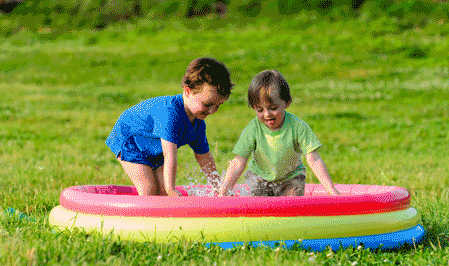WaterSafe is alerting households about the potential health risks of using a garden hosepipe for watering and cooling off if simple safety measures aren’t followed.
The UK register (supported by all UK water companies) of approved plumbers warns that hosepipes that are incorrectly fitted, or left submerged in places like ponds, watering cans or paddling pools, can cause illness when dirty water ‘backflows’ into the drinking water supply.
The best way to stay safe – and save water – in hot weather is to swap the hosepipe for a watering can. However, for those using a hosepipe, WaterSafe has compiled a list of tips, backed by The Royal Society for Public Health.
- Fit an approved double check valve to hosepipes to prevent any water, or contaminants from the garden, ponds or paddling pools, flowing back into your mains drinking water supply.
- Don’t place hosepipes in drains, garden ponds, buckets or watering cans where they can be submerged as contaminated water could be siphoned back into your homes’ drinking water pipework.
- Turn off your hosepipe at the tap and ideally fully disconnect it when not in use.
- Fit a self-closing flow control, such as a trigger spray gun, to prevent it being used when unattended.

Hosepipes can become a breeding ground for potentially harmful bacteria including legionella, which thrives in warm, stagnant water. Aerosols (a very fine spray which cannot be seen by the human eye) are formed when the hosepipe is used and can be inhaled and lead to legionnaires’ disease.
Whilst legionnaires' disease (a form of pneumonia) is rare, it can cause serious illness or even death particularly to the elderly or those with underlying illness. These simple steps will help to protect people:
- Keep your hose somewhere cool and out of the sun. Particularly, don’t use a hosepipe that has been sitting around and full of warm water to fill a hot tub. The warm water within the tub will allow bacteria – including Legionella and Pseduomonas aeruginosa (a bacteria that can cause a nasty itchy rash) – to quickly grow.
- Gently run the water out of the hose before you use it – without any form of spray attachment on the end.
-
Julie Spinks, director of WaterSafe, said: “We’re encouraging everyone to follow these simple safety measures to not only help avoid contaminating your drinking water supply but also reduce the risk of contracting a serious illness.
“A WaterSafe approved plumber will be happy to help If you need help fitting an approved double check valve. They’re specially trained in the Water Fittings Regulations and Byelaws that help keep the UK’s drinking water safe.
“Better still, using a watering can instead of a hosepipe is much more water-efficient and won’t pose a risk to your drinking water supply.”
For more information about Legionnaires’ disease and hosepipe safety from health expert Dr Susanne Lee, director of Legionella Ltd, check the WaterSafe blog.